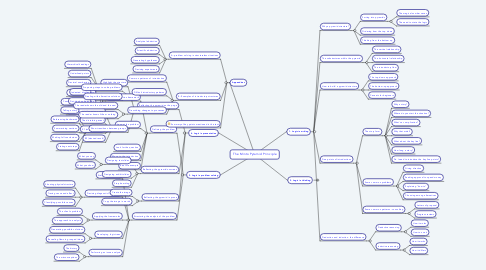
1. 3. Logic in problem solving
1.1. Defining the problem
1.1.1. Problem-definition framework
1.1.1.1. Laying out the elements
1.1.1.2. Converting to an introduction
1.1.2. Lay out the problem
1.1.2.1. The starting point/opening scene
1.1.2.2. The disturbing event
1.1.2.3. R1 (undesired result)
1.1.2.4. R2 (desired result)
1.1.3. Look for the question
1.1.4. Move to the introduction
1.1.5. Real-life example
1.2. Structuring the analysis of the problem
1.2.1. Starting with the data
1.2.2. Devising diagnostic frameworks
1.2.2.1. Showing physical structure
1.2.2.2. Tracing cause and effect
1.2.2.3. Classifying possible causes
1.2.3. Applying the frameworks
1.2.3.1. The client's problem
1.2.3.2. The approach to analysis
1.2.4. Developing logic trees
1.2.4.1. Generating possible solutions
1.2.4.2. Revealing flaws in grouped ideas
1.2.5. Performing an issue analysis
1.2.5.1. The history
1.2.5.2. The misconceptions
2. 4. Logic in presentation
2.1. Reflecting the pyramid on the page
2.1.1. Highlight the structure
2.1.1.1. Hierarchical headings
2.1.1.2. Underlined points
2.1.1.3. Decimal numbering
2.1.1.4. Indented display
2.1.1.5. Dot-dash outlines
2.1.2. Show transitions between groups
2.1.2.1. Telling a story
2.1.2.2. Referencing backwards
2.1.2.3. Summarising sections
2.1.2.4. Making full conclusions
2.1.2.5. Stating next steps
2.2. Reflecting the pyramid onscreen
2.2.1. Designing text slides
2.2.1.1. What you say
2.2.1.2. What you show
2.2.2. Designing exhibit slides
2.2.3. Storyboarding
2.3. Reflecting the pyramid in prose
2.3.1. Create the image
2.3.2. Copy the image in words
3. Appendices
3.1. A: problem solving in structureless situations
3.1.1. Analytical abduction
3.1.2. Scientific abduction
3.1.3. Generating hypotheses
3.1.4. Devising experiments
3.2. B: Examples of introductory structures
3.2.1. Common patterns of introduction
3.2.2. Difficult introductory patterns
3.2.2.1. Proposing steps to solve problems
3.2.2.2. Dealing with alternative solutions
3.2.3. Describing changes to processes
3.2.3.1. The reader knows the old and the new
3.2.3.2. The reader knows little or nothing
3.3. C: Summary of key points mentioned in the text
4. 1. Logic in writing
4.1. Why a pyramid structure?
4.1.1. Sorting into pyramids
4.1.1.1. The magical number seven
4.1.1.2. The need to state the logic
4.1.2. Ordering from the top down
4.1.3. Thinking from the bottom up
4.2. The substructures within the pyramid
4.2.1. The vertical relationship
4.2.2. The horizontal relationship
4.2.3. The introductory flow
4.3. How to build a pyramid structure
4.3.1. The top-down approach
4.3.2. The bottom-up approach
4.3.3. Caveats for beginners
4.4. Fine points of introductions
4.4.1. The story form
4.4.1.1. Why a story?
4.4.1.2. Where do you start the situation?
4.4.1.3. What's a complication?
4.4.1.4. Why that order?
4.4.1.5. What about the key line?
4.4.1.6. How long a story?
4.4.1.7. Do I need to introduce the key line points?
4.4.2. Some common problems
4.4.2.1. Giving direction
4.4.2.2. Seeking approval to spend money
4.4.2.3. Explaining "how to"
4.4.2.4. Choosing among alternatives
4.4.3. Some common patterns - consulting
4.4.3.1. Letters of proposal
4.4.3.2. Progress reviews
4.5. Deduction and induction: the difference
4.5.1. Deductive reasoning
4.5.1.1. How it works
4.5.1.2. How to use it
4.5.2. Inductive reasoning
4.5.2.1. How it works
4.5.2.2. How it differs
5. 2. Logic in thinking
5.1. Imposing logical order
5.1.1. Time order
5.1.1.1. Distinguishing cause from effect
5.1.1.2. Revealing the underlying process
5.1.2. Structural order
5.1.2.1. Creating a structure
5.1.2.2. Describing a structure
5.1.2.3. Recommending changes to a structure
5.1.2.4. Using the concept to clarify thinking
5.1.3. Degree order
5.1.3.1. Creating proper class groupings
5.1.3.2. Identifying improper class groupings
5.2. Summarising grouped ideas
5.2.1. Avoiding intellectually blank assertions
5.2.2. State the effect of actions
5.2.2.1. Make the wording specific
5.2.2.2. Distinguish the levels of action
5.2.2.3. Summarise directly
5.2.3. Look for the similarity in conclusions
5.2.3.1. Find the structural similarity
5.2.3.2. Look for closer links
5.2.3.3. Make the inductive leap

